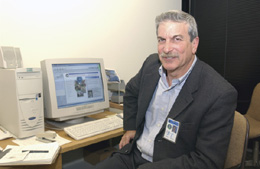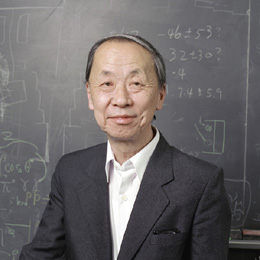 |
|
New Head of Program Planning by Kurt Riesselmann
For experimenters, accelerator experts or technicians, in fact almost everyone, life at Fermilab revolves around the operations of its accelerator complex. “When will we get particle collisions at our experiments? When can we have more time for beam studies to improve the performance of our accelerators? When will the beams be shut down so that we can install new equipment?” Those are typical inquiries, and everyone tries to get the best and biggest slice of the pie. But what is good for one group often presents a handicap for a different team. Finding a plan that works for everyone is a daunting task. “The pressures on the experiments are different from the pressures on the laboratory,” said Jeff Appel, newly appointed Assistant Director and Head of Fermilab’s Program Planning Office. “Fortunately, there is a very common set of goals: It’s all physics driven. If we don’t lose sight of those goals, then it will be easy to communicate with the various parties involved.” Appel has been at the center of this pressure system since December 1, when he assumed his new PPO duties. “There are two cultures at the laboratory: aggressive planning versus no-risk scheduling,” Appel outlined his view. “If you are aggressive in your goals, you reach for more than you are assured of attaining. If you focus on reliable schedules, it gets harder to reach for more: nothing ventured, nothing gained. I see my job as working at the interface of these two cultures.” To help the lab directors navigate the best course, Appel pulls together information on operations and future plans for both accelerators and experiments, taking note of the various requests for beam time and shutdowns. He also provides the support documents when the lab directors negotiate a memorandum of understanding with a university or an experimental collaboration, clarifying the responsibilities of all parties. “I’m the expediter for information,” said Appel, who has been at the lab for 27 years. “The focus of my new job is that communication happens even when everybody has lots to do. There are lots of venues for communication. There are meetings, there is the cafeteria and there are office doors that are open. Above all, I will have my ear to the ground.” Appel, one of the physicists who discovered the bottom quark at Fermilab in 1977, has experienced both the need for, and the power of, program planning from many points of view. In the 1970s, working in the switchyard group, he was at the interface between lab management and several collaborations of physicists conducting fixed-target experiments. During his administrative positions as head of Computing (1986-1990) and head of the Physics Department (1990-1998), he closely worked with the Fermilab directorate while staying actively involved in physics experiments. As a spokesperson of two collaborations, Appel directly dealt with the PPO and advocated the needs of his physics experiments (E769, E791). In the last five years, Appel has led a group of scientists developing high-precision particle-detection components (pixel detectors) for the BTeV experiment. “Jeff is very familiar with the laboratory and fully aware of the diversity of its program,” said Hugh Montgomery, Associate Director for Research. “He has the respect of both the experimental community and the directorate. In his new position, he sits at the interface of these two groups, advocate and defender for each to each.”
Appel has replaced Taiji Yamanouchi, who retired after serving as head of the PPO from 1980 to 2002, interrupted by a yearlong stint at the CDF experiment in 1986. Yamanouchi’s tenure at PPO included the early fixed-target days, when he had to coordinate the simultaneous activities of as many as two dozen experimental collaborations at the lab. In the last ten years, he balanced the experiments’ needs of data taking with the shutdowns required by the upgrade of the Linear Accelerator and the construction of the Main Injector. “In the ’90s, we were down almost half the time,” said former Fermilab Director John Peoples. “There was an awful lot of construction going on. Trying to schedule all the big interruptions was Taiji’s job. I would always come up with crazy schedules, and Taiji would make them work. Every week there were changes as we tried to balance operations with construction that required the accelerators to be shut down.” With less construction and fewer experiments, it seems as if Appel’s job might be somewhat easier. But the experimenters’ cry for more powerful beams and steady delivery is getting louder. Both CDF and DZero have a growing appetite for colliding beams, and the new neutrino experiments MiniBooNE (started in 2002) and MINOS (beginning in 2005) are asking for delivery of as many protons as possible. Appel, who is currently working on a draft schedule for 2003, is aware of the task ahead. “I think the challenges are at least as great as ever,” he said. “Certainly the importance and visibility of the task is no less so.”
ON THE WEB: Fermilab Program Planning Office: http://www.fnal.gov/directorate/profiles/PPO.html Fermilab Directorate: http://www.fnal.gov/directorate/directorate.html |

